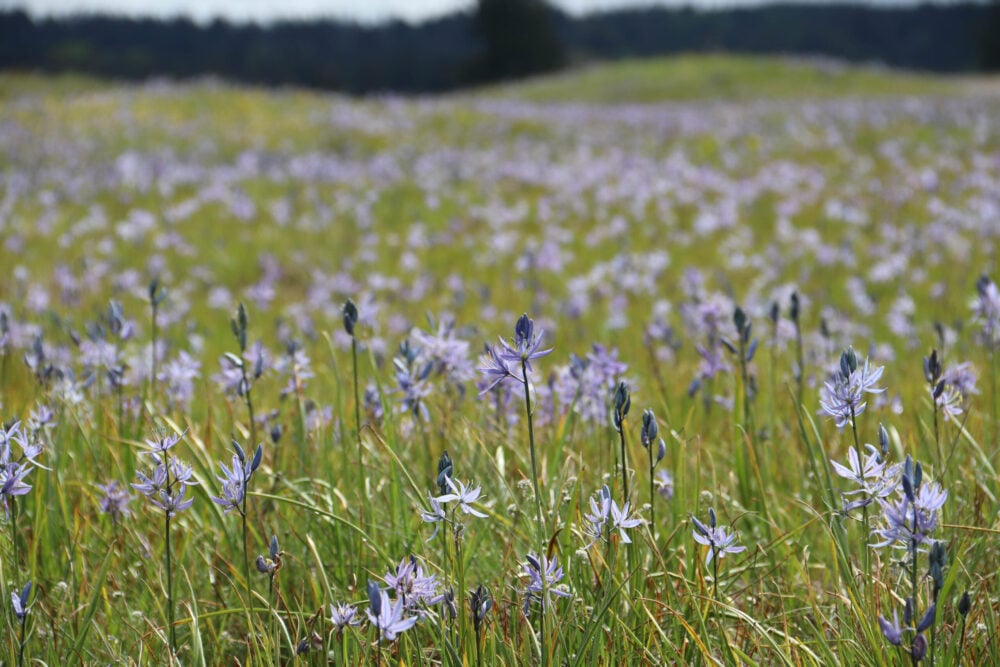
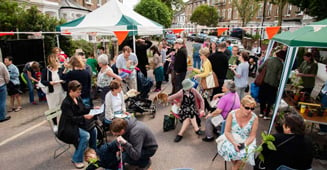
Contributor
- Topics: Archive
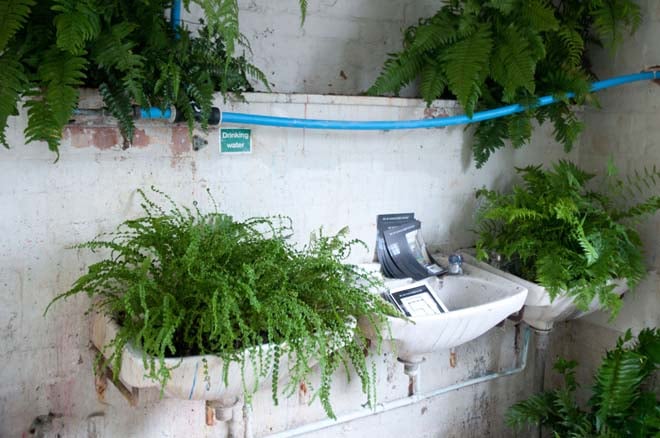
Each May, the Chelsea Fringe does not wait for gardeners to come to the garden, it sends the garden out through the streets of London, among the people. The three-week festival skirting the famous Royal Horticultural Society’s Chelsea Flower Show captures the attention of any stray passerby, enticing them with flowers, foliage, and food.
Although both festivals are full of gardens and gardeners, the difference is in the approach. RHS, a proponent of the Fringe, offers carefully constructed main avenue gardens that are sponsored, judged, and awarded. The Fringe takes a hands-off approach: it asks nothing of those creating its myriad of events apart from a small registration fee. “It’s a true Fringe,” says founder Tim Richardson. “We’ve no selection process and no funding.”
The Fringe comes in many forms—it appears as a pop-up cocktail bar, gnomes invading neighborhood tree pits, musical performances, and dusk walks through Kew Gardens.

Tim conceived the idea of the Chelsea Fringe in May of 2010 during the Chelsea Flower Show. He had attended the Edinburgh Fringe Festival in the past, and says that he woke up one morning and thought, why not a Fringe for gardens? He announced the “alternative garden festival” in 2011, and produced the first festival in 2012. From its inception, Chelsea Fringe has had difficulty thinking small.
“We expected 12 to 20 events,” Tim says, “but secretly I hoped for 30 or 40.” Wrong! More than one hundred events registered for the first year. What began almost on a whim, turned into a proper festival. After 250-plus events in 2012, and a surprise visit to an event in Hackney by the Duchess of Cornwall, Tim says, “We found ourselves legitimate.”
Tim’s life sounds as eclectic as the happenings at the Fringe. He is a garden columnist for the British newspaper The Telegraph and a theater critic for Country Life, a weekly glossy magazine in the UK. He’s written for The Washington Post and The New York Times and he teaches landscape design in Vienna. His book, The New English Garden (Frances Lincoln) was released last year. It isn’t as if he didn’t have something else to do.
Fortunately, the organization of the Fringe is taken on not just by Tim, but also by a host of volunteers divided into various London districts. To the public, the Fringe appears casual and fun. “It doesn’t look like it, but we’re run formally,” he says. “Even revolutionaries have to be organized.”
Fringe events are centered in all parts of London, and several satellite locations were added to the mix in 2013, including Birmingham, Vienna, and online. Requirements are few and registration is kept open until the final day, just in case someone has a last-minute brainstorm. “If it’s about flowers, plants, or gardening, and it’s legal and interesting—then it’s in.”
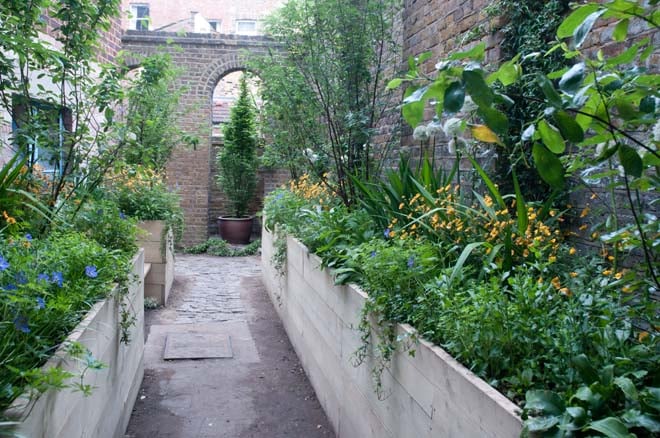
Proper festivals may have entries that are juried and judged, but do proper festivals have garden installations in a Victorian-era men’s toilet? No, thought not.
The WC@Vanguard Court, one of the highlights of the 2013 Fringe, appeared in the Camberwell district of South East London. Today, Vanguard Court houses stylish artists’ studios. At the beginning of the twentieth century it was a cart-building factory, but there remained a piece of it untouched for many years.
That is, until designer Anna Rose Hughes took the derelict toilet block, filled with rubble and Japanese knotweed, and transformed it from a “dumping ground for rubbish to lovely space.” She built a narrow walkway between a building and a wall and lined it with raised beds that hold small trees, such as ornamental cherries (Prunus serrula) and serviceberry (Amelanchier lamarckii). Ferns splashed from the toilets and sinks. “The wonderful thing about the Fringe,” Anna Rose says, “is having the freedom to do what I want with no brief, as it were.
From disused men’s toilets to abandoned power stations—Battersea Power Station, just over the bridge from the Chelsea Flower Show, hosted dance performances, a garden art installation, and a farmers market.
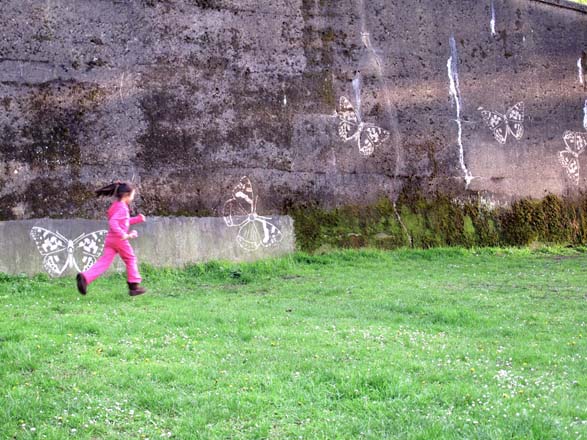
The Fringe includes any and all things beloved by gardeners—especially food. Volunteers handed out 15,000 seed packets, obtained with help from the National Trust, at farmers markets. The result: a lot of happy allotment gardeners.
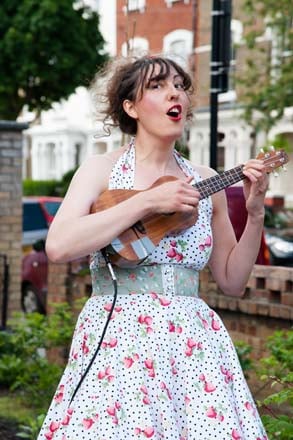
And what happy gardener doesn’t hum a tune of compost and harvest while he or she works? Such is the case with “Can You Dig It?” the music of Jo Stephenson on ukulele and Dan Woods on accordion. Allotments in Britain, just as community gardens in the US, are enormously popular these days. Both Jo and Dan have plots, and although they have separate careers as musicians, decided to team up to write comedy songs about growing your own.
Inspired by real life, the songs they performed at the Fringe touched every gardener’s heart. These included “Derrick the Evil Pigeon” and a lament based on a sign Jo saw in her own allotment: “To Whoever Stole My Giant Marrow, I Hope It Does You No Good.” Jo sang a love song to Alan Titchmarsh, a highly popular British garden personality on television and radio and in print, and Dan told the story of Mary, “a girl who loved her cabbages more than her man.”
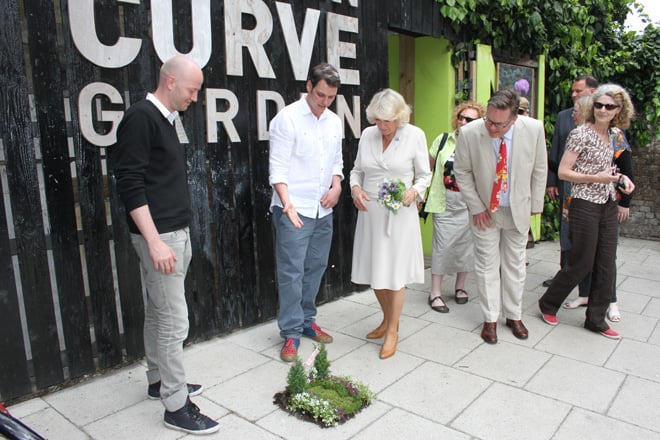
The Fringe, Jo says, shows the “slightly more quirky side of gardening.”
Many popular events center ’round food and drink. The Midnight Apothecary, a pop-up cocktail bar set in a tiny potager next to the Brunel Museum on the lid of the Thames Tunnel, offered a special Fringe cocktail. In Finsbury Park, North London, gardeners held a Cake Sunday, sampling each other’s baking and admiring front gardens in the neighborhood.
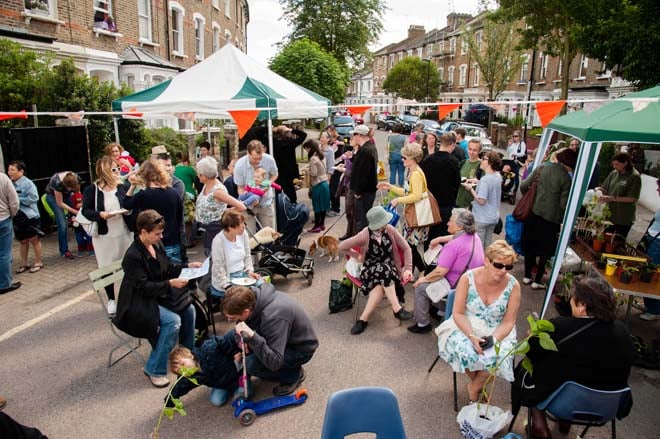
Not every event was face-to-face. Garden blogger Michelle Chapman, who lives in Chippenham, organized The Bloggers’ Cut, an online Fringe event. Cake and tea or coffee is a vital part of garden visiting in Britain. Michelle encouraged participants to bake a cake and post a link on her site, Veg Plotting. At the completion of the Fringe, Michelle created a Cake Finder so that everyone could see who participated; the pins on the map stretch from near Perth, in Scotland, all the way to Truro in Cornwall. (www.vegplotting.blogspot.co.uk search: cake finder)

Putting on the Fringe sounds like a huge undertaking, but by the time the festival is underway, there’s little left for Tim to do—or so he says—and so he visits several events each day. And while he’s at it, he probably cannot help but think of next year. Plans are always afoot, and one idea Tim hopes to see more of is satellite venues. Any place in the world would do. To qualify as a satellite Fringe site, he says, “All you need is five events scheduled, and you’re in.”
West Coast gardeners—are you game?
[sidebar]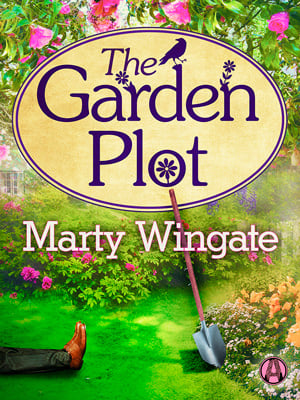 Watch for the release of The Garden Plot by Marty Wingate, the first of her Potting Shed Mysteries to be released this spring from Alibi.[/sidebar]
Watch for the release of The Garden Plot by Marty Wingate, the first of her Potting Shed Mysteries to be released this spring from Alibi.[/sidebar]
The Chelsea Fringe
May 17 to June 8, 2014
To be held throughout London and at satellite locations.
For more information go to: www.chelseafringe.com
Share:
Social Media
Garden Futurist Podcast
Most Popular
Videos
Topics
Related Posts
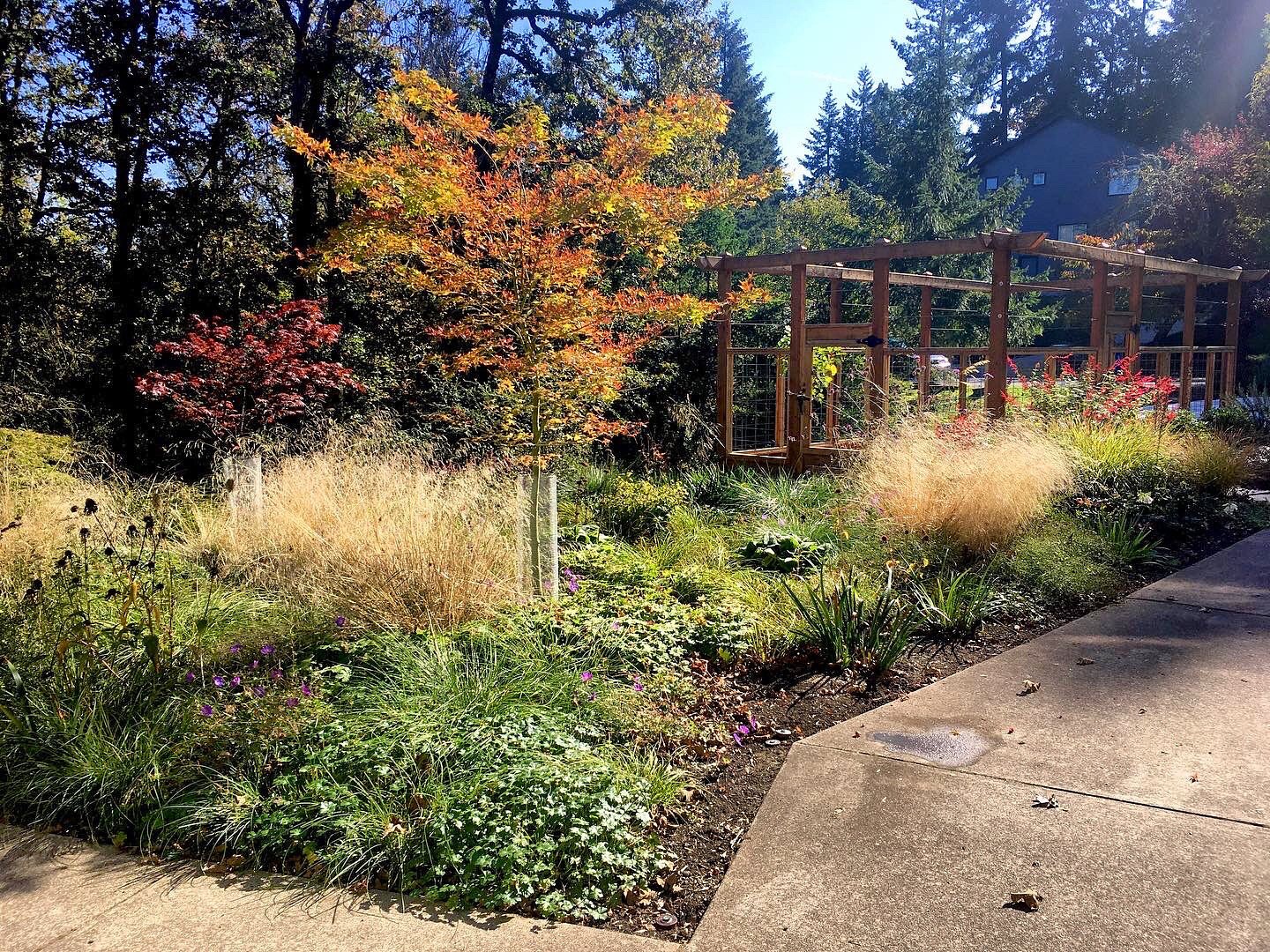
Low Maintenance Gardens – Better for Pollinators and People
Autumn 2022 “I come out every day. It’s therapy, my meditation.” Janet’s young garden transformed from overgrown, invasive plants to mostly natives. The dailiness of
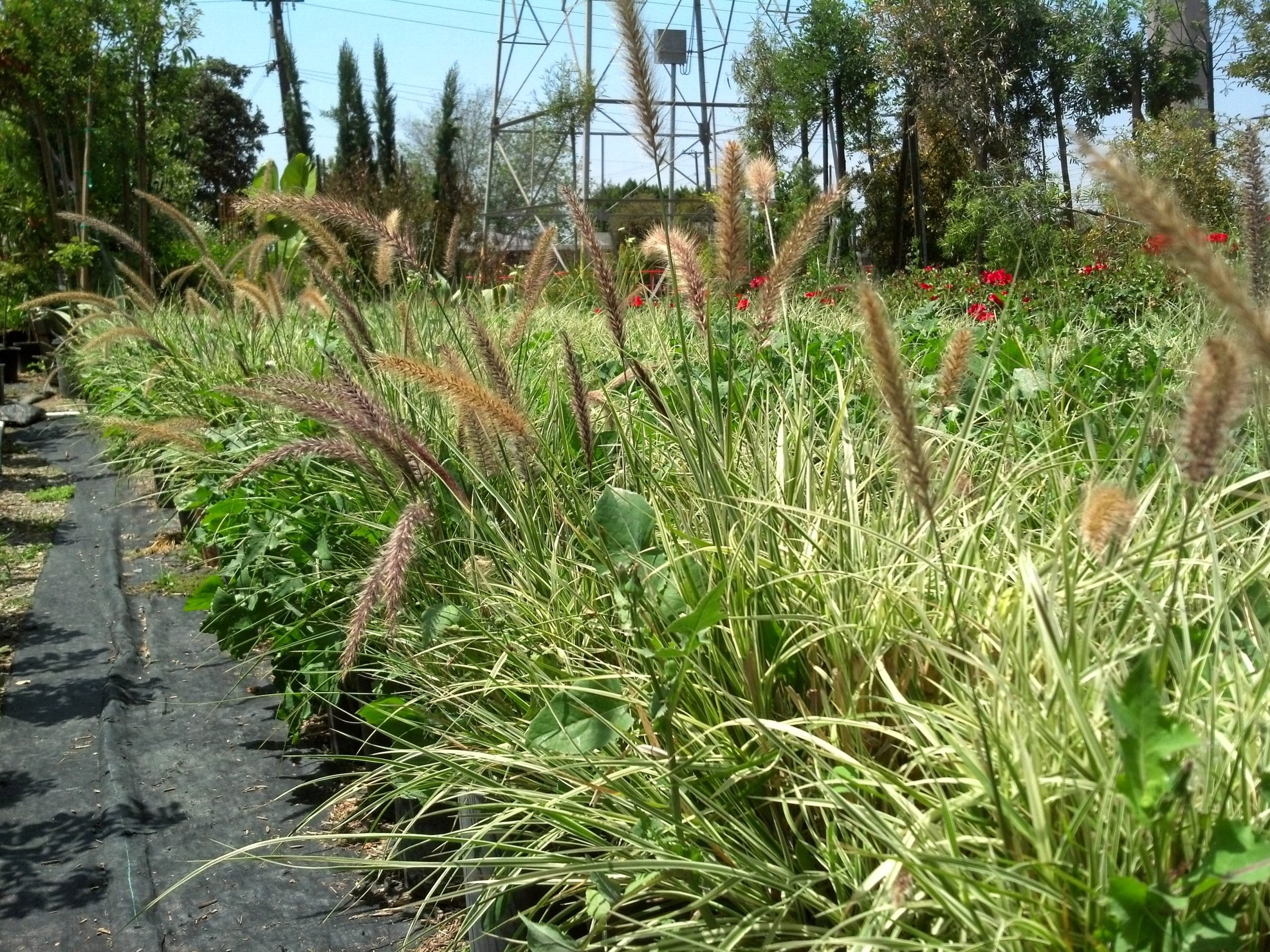
Invasive Plants Are Still Being Sold: Preventing Noxious Weeds in Your Landscape
Autumn 2022 With so many beautiful ornamental plant species and cultivars throughout California and the Pacific Northwest, how do you decide which ones to include

Garden Design in Steppe with Transforming Landscapes with Garden Futurist Emmanuel Didier
Summer 2022 Listen to full Garden Futurist: Episode XVII podcast here. Emmanuel Didier, Principal and Creative Director at Didier Design Studio is a leading figure
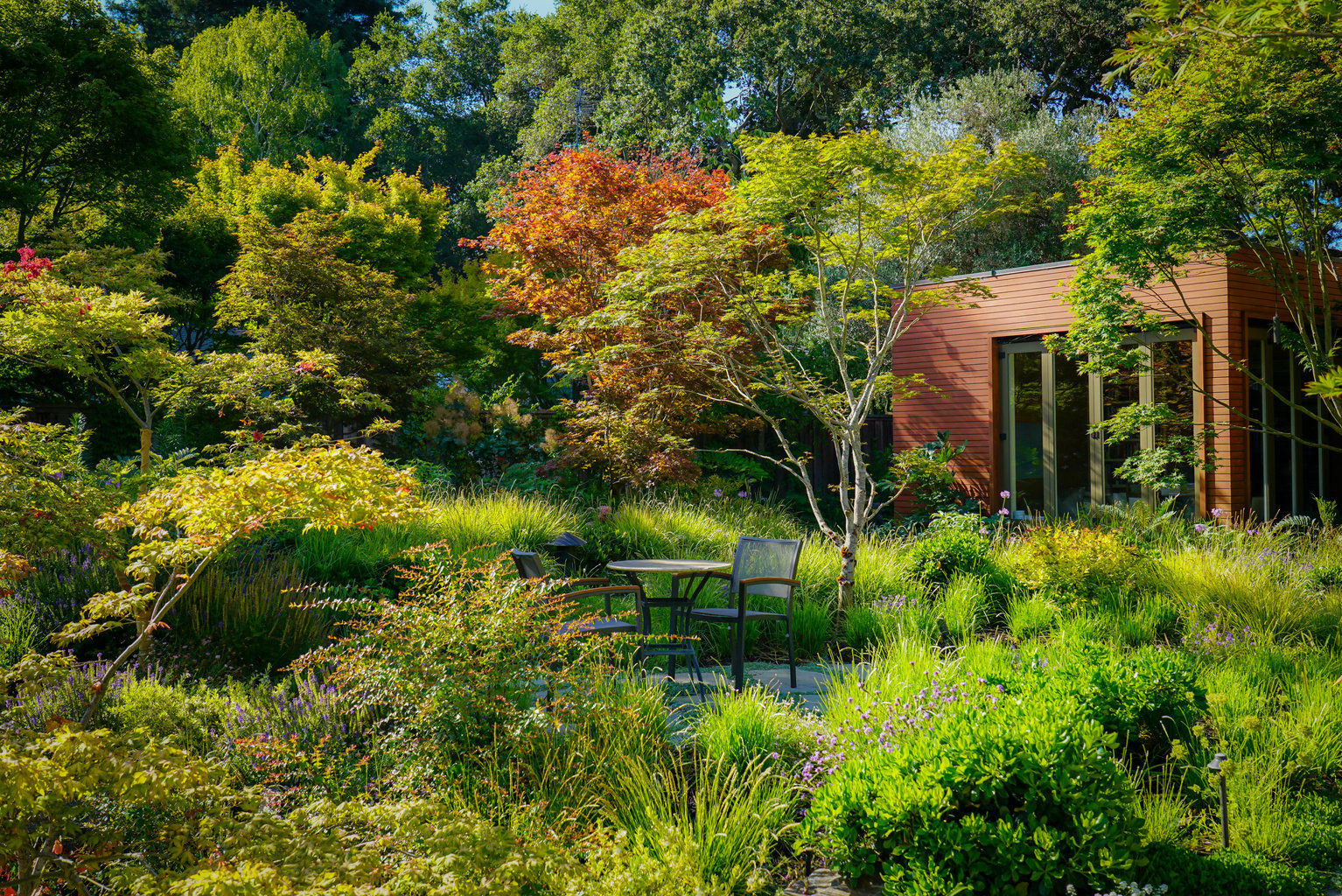
Seslerias: Versatile Groundcover Meadow Grasses
Summer 2022 Without question, the most beautiful and versatile of all the groundcover meadow grasses are the moor grasses (Sesleria). Moor grasses tick off all





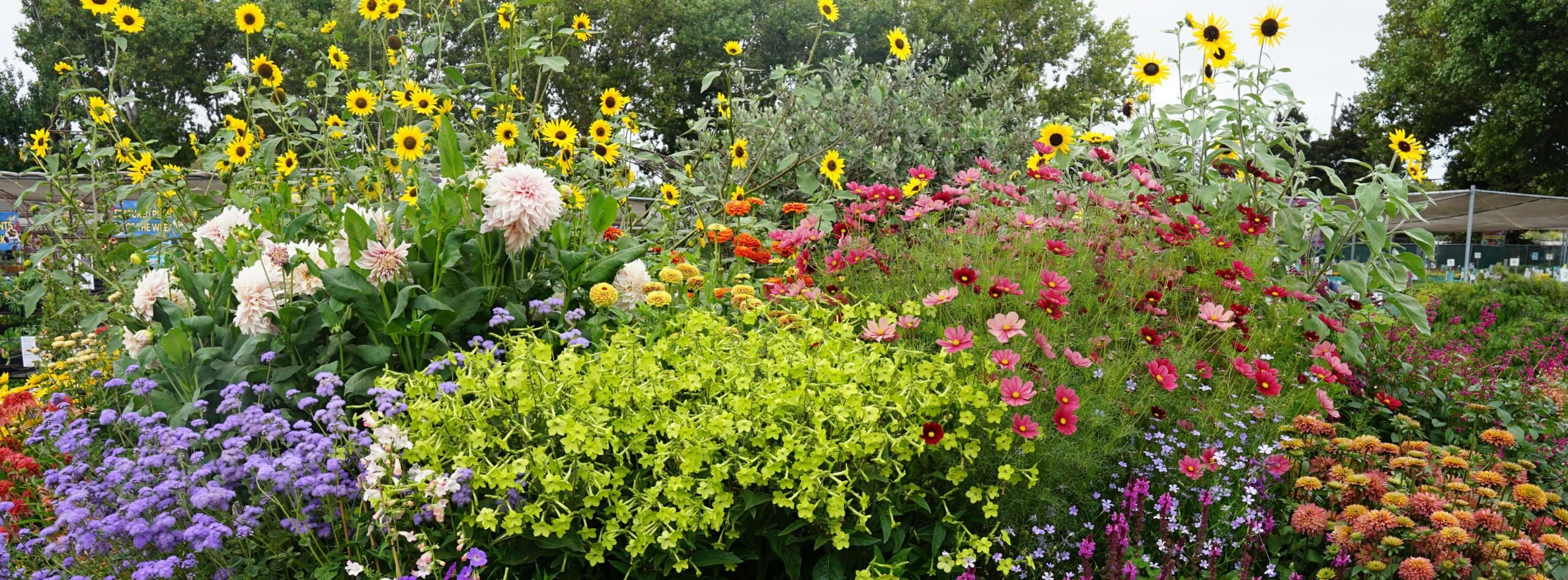




Responses